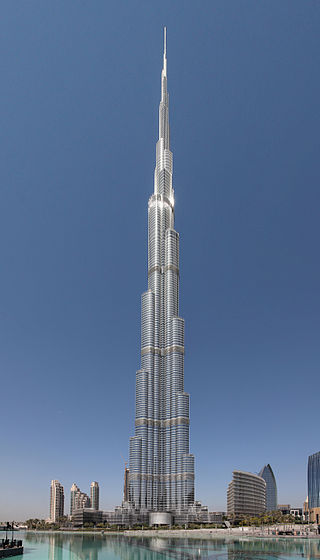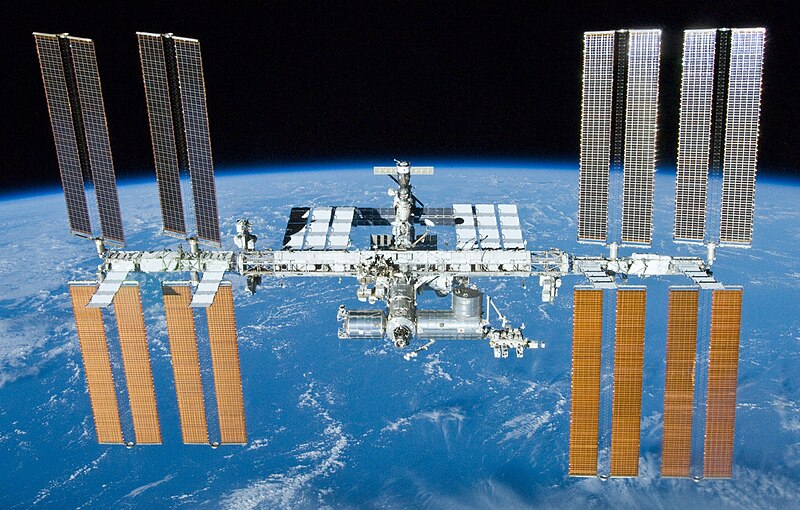Know about the world most expensive man-made object? If you think it's Burj Khalifa then you are wrong.
Some of you might think that Burj Khalifa might be the most expensive man made thing.
It's construction cost is quite high nearly $1.5 billion but it's not even close to the most expensive man made object.
 |
| Burj Khalifa |
So, which is the most expensive man made object?
It's construction cost is 150 billion US Dollars.
Yes you read it right. $150 billion. And it's non other than the International Space Station often abbreviated as ISS.

The International Space Station (ISS) is a space station, or a habitable artificial satellite, in low Earth orbit. Its first component launched into orbit in 1998, and the ISS is now the largest man-made body in low Earth orbit and can often be seen with the naked eye from Earth.
The ISS consists of pressurized modules, external trusses, solar arrays, and other components.
ISS components have been launched by Russian Proton and Soyuz rockets, and American Space shuttles.
What is it's purpose?
-The primary purpose of the ISS is to provide an international laboratory to conduct experiments in the weightless environment of microgravity.
-The ISS serves as a micro gravity and space environment research laboratory in which crew members conduct experiments in biology, human biology, physics, astronomy, meteorology, and other fields.
-The station is also suited for the testing of spacecraft systems and equipment required for missions to the Moon and Mars.
-The ISS maintains an orbit with an altitude of between 330 and 435 km (205 and 270 mi) by means of re-boost manoeuvres using the engines of the Zvezda module or visiting spacecraft.
-It completes 15.54 orbits per day.
Temperature inside the ISS
Onboard the ISS, the air conditioner in the American segment keeps the temperature between 64.5° F and 80.5° F (18° C and 27° C). The crew can adjust that temperature to their comfort.
It's a little warmer in the Russian segment.
This is the first question that comes to my mind when I am thinking of something which is build in Space.
So, How much bigger can ISS gets?.
Onboard the ISS, the air conditioner in the American segment keeps the temperature between 64.5° F and 80.5° F (18° C and 27° C). The crew can adjust that temperature to their comfort.
It's a little warmer in the Russian segment.
This is the first question that comes to my mind when I am thinking of something which is build in Space.
So, How much bigger can ISS gets?.
Technically… there’s no limit to its size.
The International Space Station is the only large-scale construction we’ve ever conducted in space thus far, and in such environment things are much more different there than on Earth.
On Earth, if you want to build a large skyscraper for every floor that you stack on top of the foundation, the more rigid and strong the foundation had to be. The building itself must also be structurally stable and can withstand high winds and weather conditions of all kind.
Building on Earth is hard.
Not in space.
Just imagine teleporting the ISS from orbit back right here on Earth: The thing wouldn’t even last for a second before bending and cracking in half.
The ISS is modular, which means that it has many docking ports such as these:

…at which you can dock a module into. We’ve been doing this for decades and this modular design is how the ISS has the shaped that it had today in the first place.

This is how ISS looks like at the beginning, just two modules connected to each others to form a continuous shape.
After years after years and tons of efforts, building up the station pieces by pieces:

(U.S. Destiny Lab’s module).
Then it finally came to its final form as we know it as today.

In short, the entire station is a giant game of space Tetris. The only thing that stopped people from building further is the cost and needs.
Taking things into space is very expensive, plus, the size and capabilities of the ISS right now is acceptable so there’s really no need to build more.
But hypothetically however, people can add more and more modules with more docking ports, more supporting trusses, a couple more solar panels and it’ll still hold up great.
It can be a tangling, irregular mess of different modules, columns and solar panels and it’ll still be okay as long as people can fill the entire thing with adequate life support systems and electricity.
You don’t really need to worry about gravity when you build things in space.
Now, when someone ask you about the most-expensive thing in the world you know much more than just it's price.
Keep Looking UP!
Source:: Quora, Wikipedia
Comments
Post a Comment